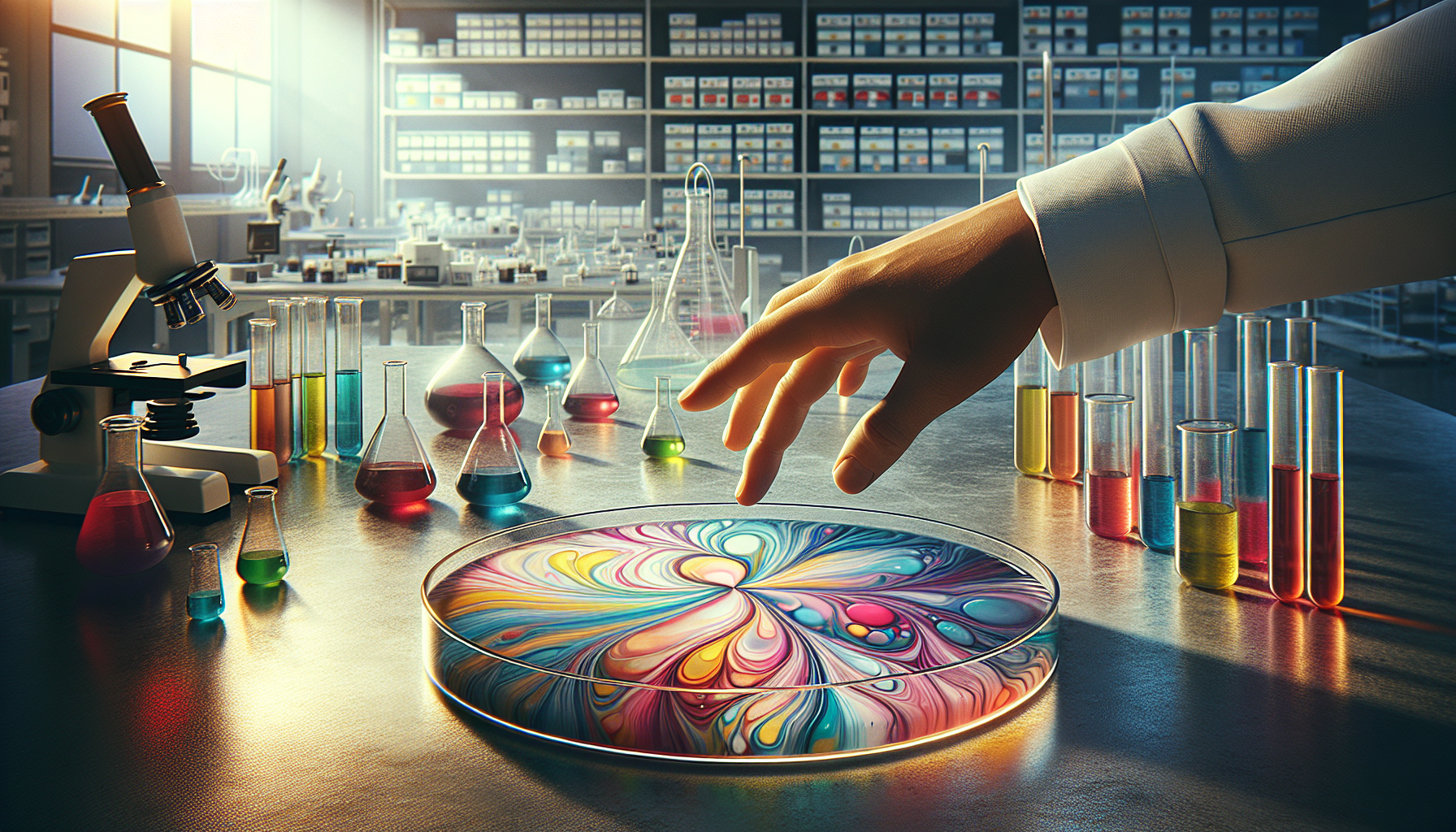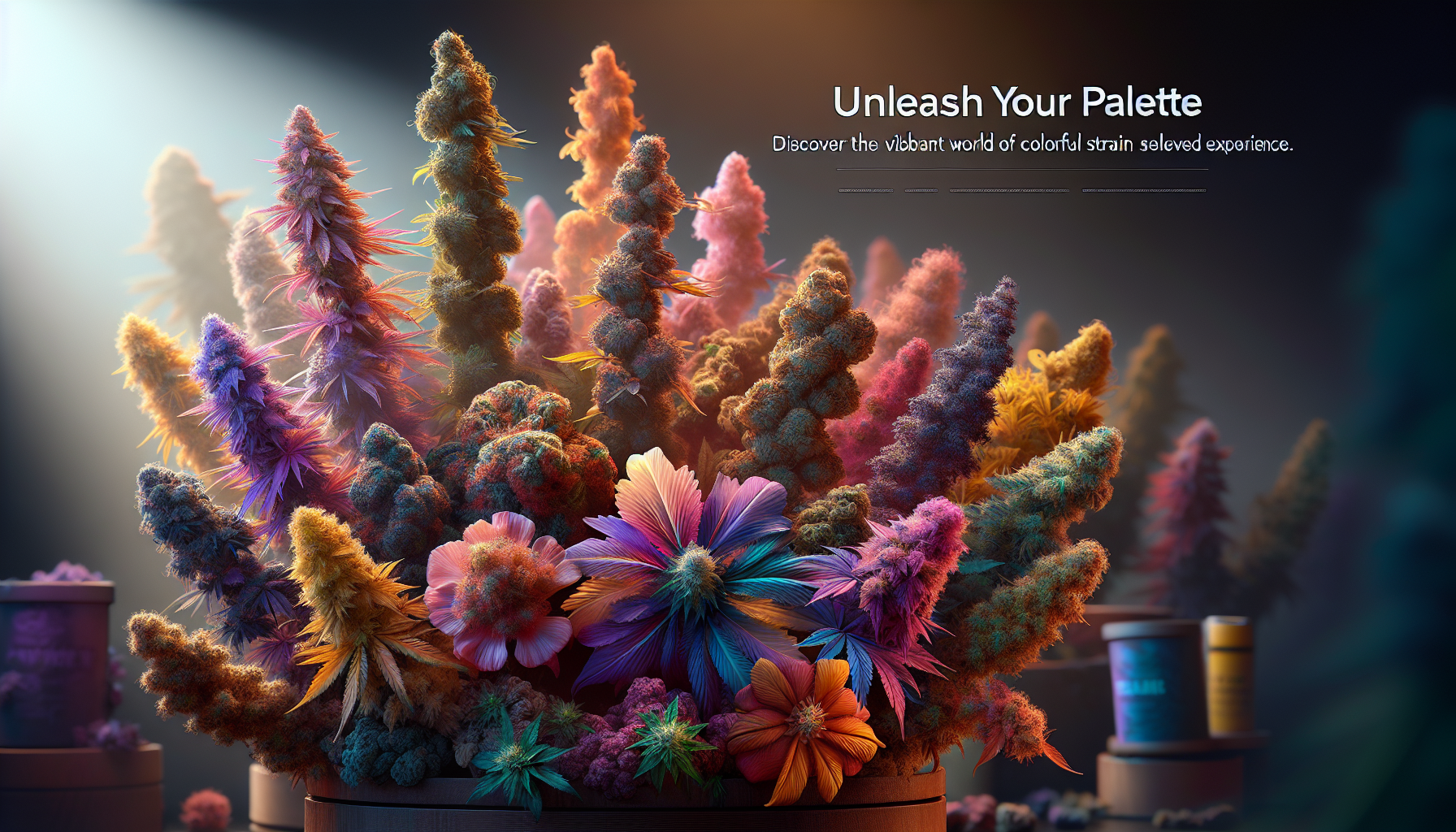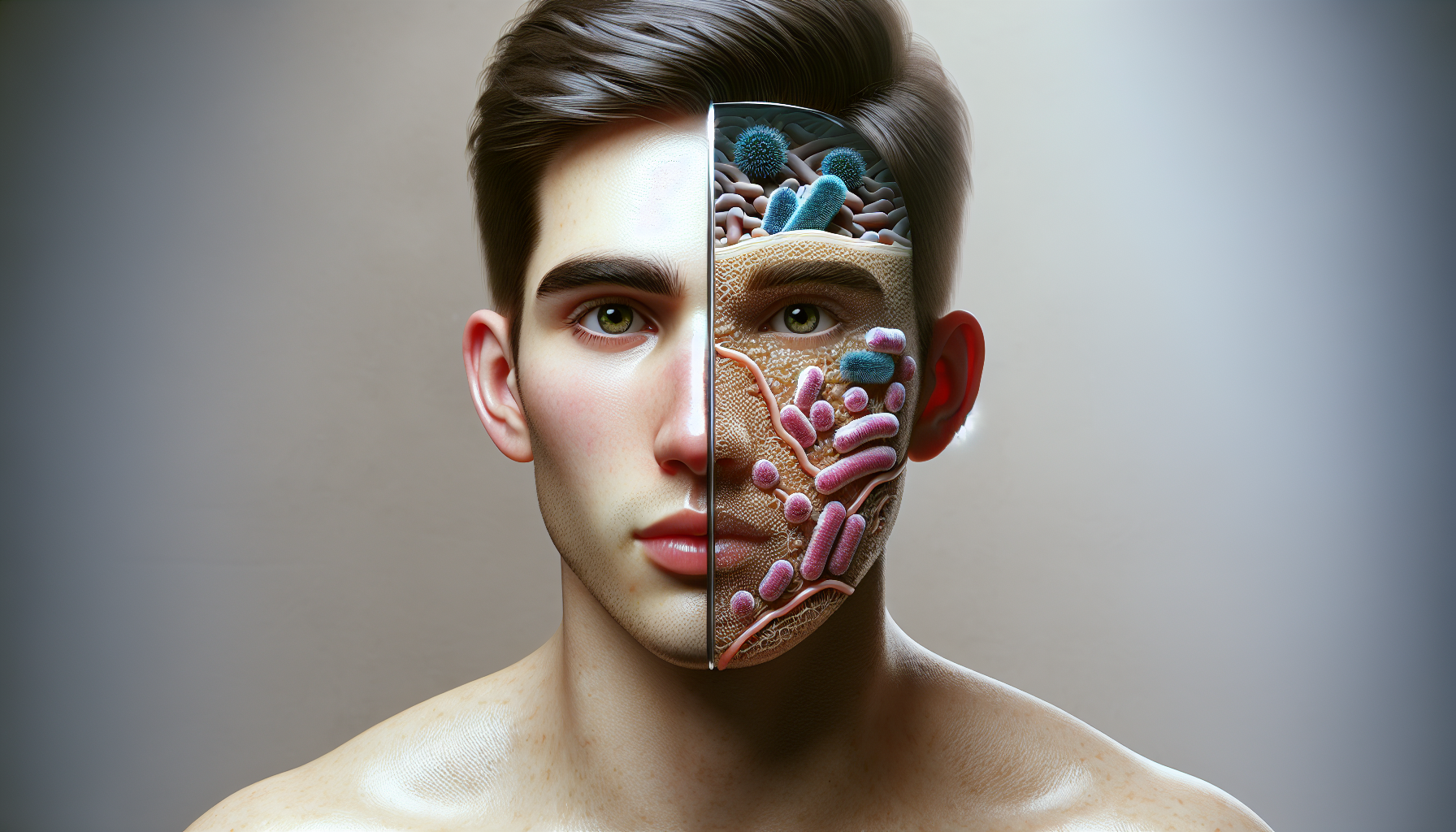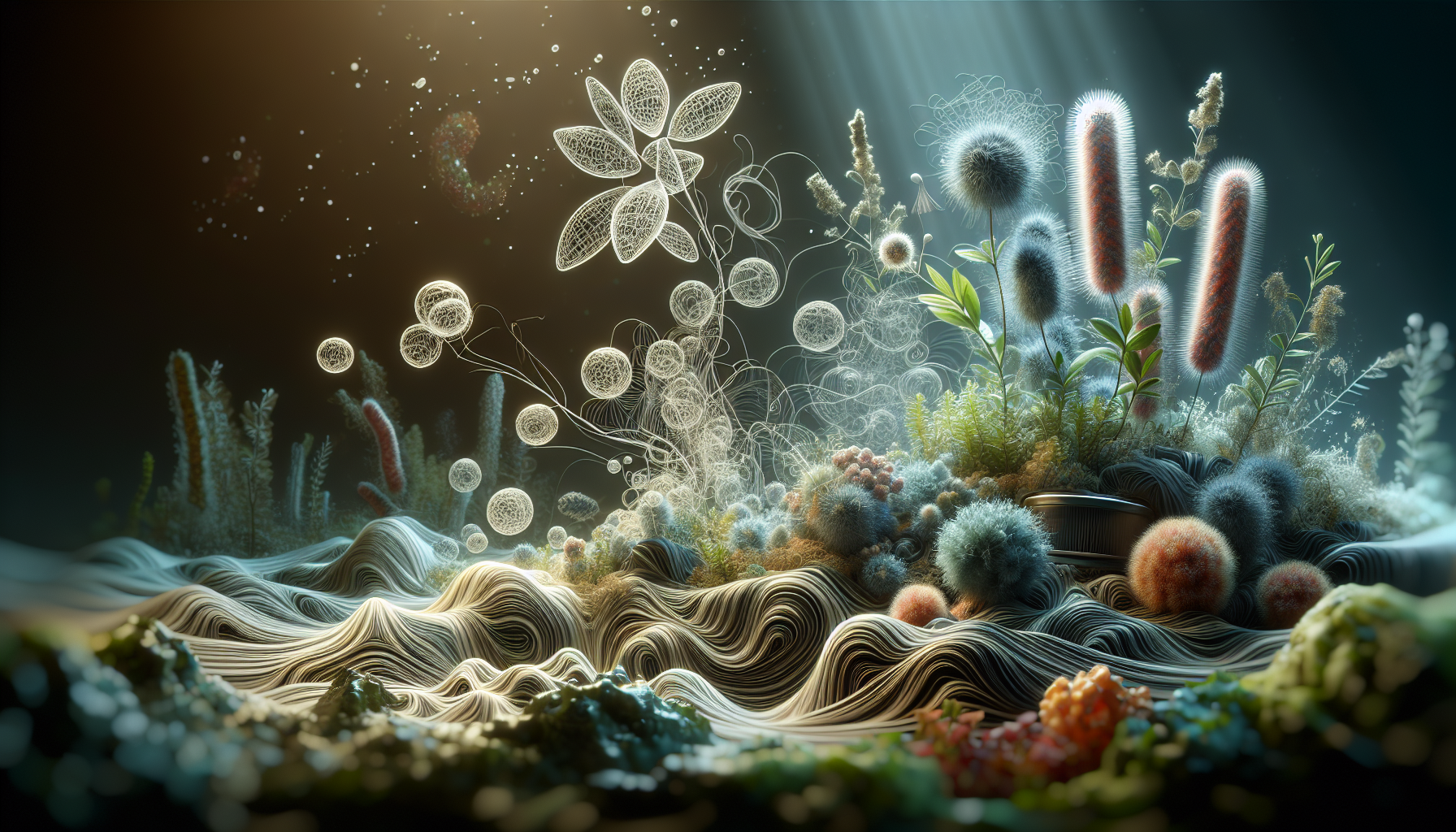In a world where the boundaries of creativity are constantly being redefined, the quest for novel mediums of expression is unending. Artists and scientists alike are on a perpetual journey to discover surfaces that not only capture their imagination but also challenge the conventional perceptions of art and science. Enter agar, a gelatinous substance derived from algae, commonly known for its indispensable role in microbiology labs. But what if I told you that this unassuming medium is fast emerging as a revolutionary canvas, pushing the envelope of creative expression? Welcome to the fascinating intersection of art, science, and innovation, where agar serves as the ultimate canvas evolution. 🌿
Traditionally relegated to petri dishes, agar has seen an extraordinary transformation, morphing from a scientific staple to an artistic muse. As a versatile and biodegradable medium, it offers endless possibilities for those daring enough to explore its potential. From vibrant microbial art that uses living organisms to create dynamic patterns, to the more avant-garde installations where textures and forms are molded from agar-based materials, this humble substance is reshaping artistic landscapes. The allure of agar as a creative platform lies not only in its unique properties but also in the collaborative opportunities it presents between artists and scientists, sparking dialogues that transcend disciplinary boundaries.
In this article, we will embark on an exploration of how agar is redefining creative paradigms. We will delve into its historical journey from the scientific realm to artistic studios, examine the technical aspects that make it such a compelling medium, and showcase inspiring projects where agar has been the protagonist. Furthermore, we’ll discuss the environmental implications of adopting such sustainable materials in art and the potential future developments in this exciting field. Prepare to be captivated by stories of ingenuity and collaboration, as we uncover the untapped potential of agar to revolutionize the very essence of creativity. 🌟
Introduction to Agar: The Revolutionary Medium
Agar, a gelatinous substance derived from seaweed, has long been a staple in scientific research, especially in microbiology. However, its role has transcended beyond laboratory settings into the realms of art and creativity, opening up a world of possibilities for artists and innovators. This seemingly simple material offers a plethora of applications, serving as a versatile canvas that invites experimentation and expression.
The transformation of agar from a scientific tool to an artistic medium is nothing short of fascinating. Its unique properties, such as transparency, texture, and pliability, make it an ideal choice for creative projects. Artists are constantly pushing boundaries, using agar to craft intricate sculptures, vibrant paintings, and even interactive installations that captivate audiences.
As we explore the evolution of agar as an artistic medium, it’s essential to understand its composition and origins. Agar is primarily composed of agarose and agaropectin, two polysaccharides that provide its gel-like consistency. Harvested from various species of red algae, agar has been used for centuries in culinary and scientific applications. Its recent adoption in the art world marks a significant shift in its utilization, demonstrating the fluidity of creative processes and the endless potential for innovation.
The Science Behind Agar: Understanding Its Properties
Agar’s unique characteristics stem from its molecular structure, which allows it to solidify at room temperature and maintain stability over a wide range of temperatures. This makes it an ideal medium for artists who require a stable yet flexible canvas. Furthermore, agar’s transparency enhances its appeal, as it can be infused with colors and textures to create visually striking pieces.
One of the most intriguing aspects of agar is its ability to hold moisture, which can be manipulated to achieve various effects in artistic projects. Artists often experiment with different concentrations of agar to alter its firmness and flexibility, leading to a diverse range of creative outcomes. This adaptability is a key factor in agar’s growing popularity within the art community.
Table: Comparison of Agar’s Properties
| Property | Description |
|---|---|
| Transparency | Allows for color infusion and visual depth |
| Flexibility | Adjustable consistency for varied artistic techniques |
| Biodegradability | Eco-friendly and sustainable |
Creative Applications of Agar in Art
Agar’s journey from the laboratory to the art studio is a testament to the power of creativity and innovation. Artists are continually exploring new ways to harness agar’s properties, resulting in a diverse array of artistic expressions. From sculptures and installations to mixed media and performance art, agar serves as a blank canvas for imagination.
One of the most notable applications of agar in art is in the creation of sculptures. Artists sculpt intricate forms by casting agar into molds or carving it directly, utilizing its firm yet pliable nature. This process allows for the creation of delicate, translucent structures that play with light and shadow, evoking a sense of ethereal beauty.
In addition to sculptures, agar is also used in interactive installations that engage audiences on a sensory level. The tactile nature of agar invites touch and exploration, encouraging viewers to interact with the art in a personal and intimate way. This interactivity adds a dynamic element to the artwork, making it an immersive experience that resonates with audiences.
Video: Exploring Agar Art
Check out this fascinating video on agar art: Exploring Agar Art – Creative Channel
Techniques and Tools for Working with Agar
Working with agar requires a unique set of techniques and tools that differ from traditional art forms. Artists must master the art of agar preparation, which involves dissolving the agar powder in boiling water and allowing it to cool to the desired consistency. This process requires precision and patience, as the concentration of agar can significantly affect the final outcome.
Once the agar is prepared, artists can employ various techniques to manipulate and shape it. Molding and casting are popular methods, allowing artists to create detailed forms with precision. Carving is another technique, where artists use specialized tools to etch intricate patterns and designs into the agar surface.
Color infusion is a critical aspect of working with agar, as it enhances its visual appeal and adds depth to the artwork. Artists experiment with different dyes and pigments, blending colors to achieve a harmonious palette. This process often involves trial and error, as the transparency of agar can affect how colors appear and interact.
List: Essential Tools for Agar Art
- Heat source for dissolving agar
- Molds for casting
- Carving tools
- Color dyes and pigments
The Future of Agar in the Art World
The use of agar in art is still in its nascent stages, with vast potential for future exploration and innovation. As artists continue to experiment with agar, new techniques and applications are likely to emerge, further expanding its role in the art world. The versatility of agar makes it an ideal medium for artists seeking to break boundaries and challenge conventional art forms.
Moreover, the intersection of art and science through agar offers exciting opportunities for interdisciplinary collaboration. Scientists and artists can work together to explore the possibilities of agar, leading to groundbreaking creations that push the limits of what is possible. This synergy between disciplines fosters a culture of innovation and creativity that benefits both the art and scientific communities.
As awareness of agar’s potential grows, it is expected to inspire a new generation of artists who are eager to explore its possibilities. Educational institutions and art programs are increasingly incorporating agar into their curricula, providing students with the skills and knowledge needed to harness this unique medium. This educational focus ensures that agar will continue to play a significant role in the art world for years to come.

Conclusion
Unleashing Creativity: Agar as the Ultimate Canvas Evolution
As we arrive at the conclusion of our exploration into the fascinating world of agar as a canvas for creativity, it’s essential to reflect on the key points we’ve covered. Throughout the article, we’ve journeyed through the historical and scientific evolution of agar, examining its transformation from a simple gelling agent to a revolutionary medium for artistic expression and scientific innovation.
We began by understanding the origins of agar and its initial uses within the realms of microbiology and culinary arts. This natural substance, derived from seaweed, has long been a staple in laboratories and kitchens worldwide. Its unique properties—being both versatile and stable—make it an ideal base for cultivating bacteria, fungi, and, as we’ve discovered, creativity.
The article highlighted the pioneering efforts of artists and scientists who recognized the potential of agar beyond its traditional applications. Visionaries in the field have begun to see agar plates not just as scientific tools, but as blank canvases where the worlds of art and science beautifully intersect. This innovative approach has birthed a new form of bioart, where living organisms are used to create stunning, ephemeral art pieces that challenge our perceptions of life and beauty.
One of the most exciting aspects of agar-based art is its ability to serve as a bridge between disciplines. Artists and scientists collaborating on these projects demonstrate that creativity knows no bounds and that the synthesis of art and science can lead to groundbreaking discoveries and expressions. This fusion not only expands the horizons of what is considered art but also enriches scientific inquiry with new perspectives and insights.
Furthermore, we’ve examined how this interdisciplinary approach fosters educational opportunities. By integrating agar art into educational settings, educators can inspire students to think creatively and critically, encouraging them to explore the intersections of art and science. This not only enhances engagement but also cultivates a new generation of thinkers who are equipped to tackle complex challenges with innovative solutions.
In considering the environmental impact, agar art also stands out as an eco-friendly alternative to traditional art materials. As we strive for more sustainable practices, the use of biodegradable agar offers a compelling solution for reducing waste and promoting ecological responsibility in the art world.
The potential of agar as a creative medium is vast and largely untapped. Its capacity to engage and inspire is matched only by the imagination of those who choose to explore its possibilities. As we continue to push the boundaries of this medium, the future holds exciting prospects for new forms of artistic expression and scientific exploration.
In conclusion, agar serves as a powerful reminder that creativity is boundless and that true innovation often lies at the intersection of seemingly disparate fields. The journey we’ve embarked on in exploring agar’s potential as a canvas highlights the importance of thinking outside the box and embracing the unknown.
We encourage you, dear reader, to take what you’ve learned and apply it in your own pursuits. Whether you’re an artist, a scientist, or someone simply curious about the world, let agar inspire you to explore the connections between disciplines and to create in ways you never imagined possible.
Feel free to share this article with others who might find it intriguing or beneficial. Engage in the conversation by leaving comments, sharing your thoughts, or even trying your hand at agar art yourself. Together, let’s continue to unleash creativity and inspire innovation across all fields. 🌟
For more insights and inspiration, explore these resources:
– BioArt: Where Science and Creativity Meet
– The Intersection of Art and Science
As we close this chapter on the evolution of agar as the ultimate canvas, let’s embrace the journey of continuous discovery and the limitless potential of creativity.
Toni Santos is a visual explorer and microscopic storyteller who delves into the hidden aesthetics of microbial life. Through a fusion of scientific curiosity and artistic insight, Toni transforms the overlooked world of bacteria, fungi, and cellular forms into mesmerizing visual narratives—revealing the elegance, symmetry, and chaos that thrive at microscopic scales.
Rooted in a fascination with life forms too small to see yet too intricate to ignore, Toni’s work captures the bizarre beauty of microbial colonies, biofilms, and spore patterns. These images aren’t just representations—they are celebrations of the artistic intelligence encoded in nature’s tiniest architects.
With a background in visual design and bio-inspiration, Toni merges scientific imaging techniques with creative expression, transforming petri dish cultures, fluorescence microscopy, and microbial textures into works that provoke both wonder and contemplation.
As the creative force behind Vizovex, Toni offers curated visual studies, microbial-inspired designs, and essays that bridge art and microbiology—inviting viewers to reimagine what beauty means at the edge of perception.
His work is a tribute to:
The hidden geometries of living systems
The surprising elegance of microbial growth
The role of micro-life in shaping visual culture
Whether you’re a scientist, artist, or simply curious about the unseen world that sustains us, Toni opens a window into a universe where life writes poetry in colonies and patterns, one microbe, one frame, one breathtaking detail at a time.





